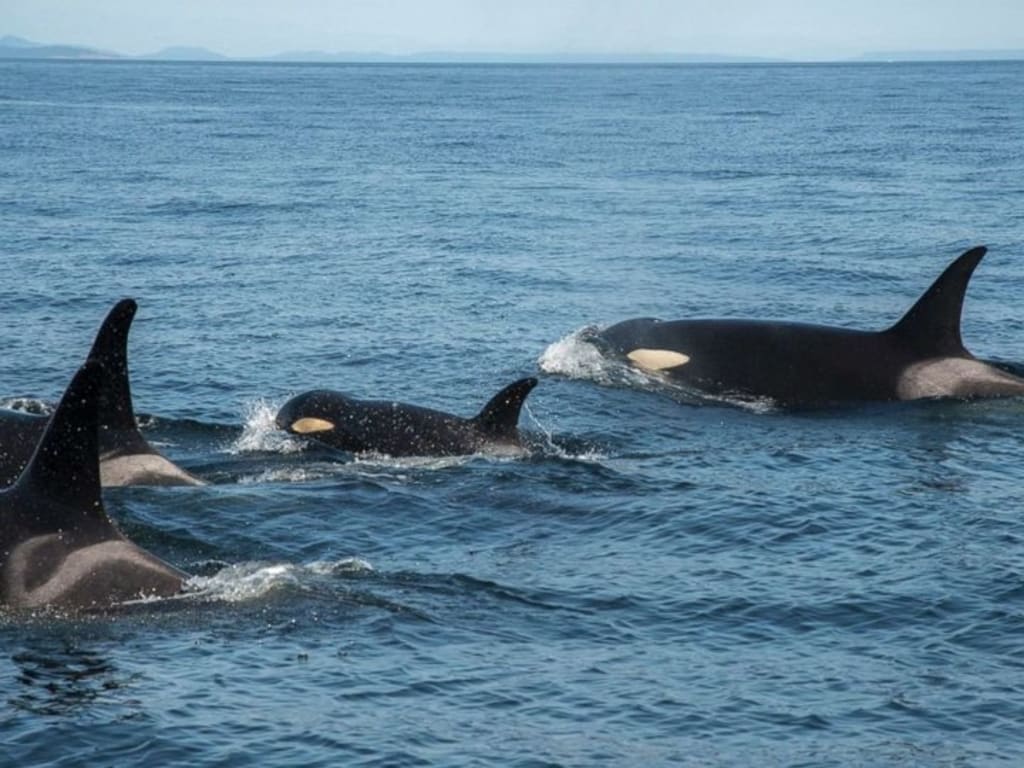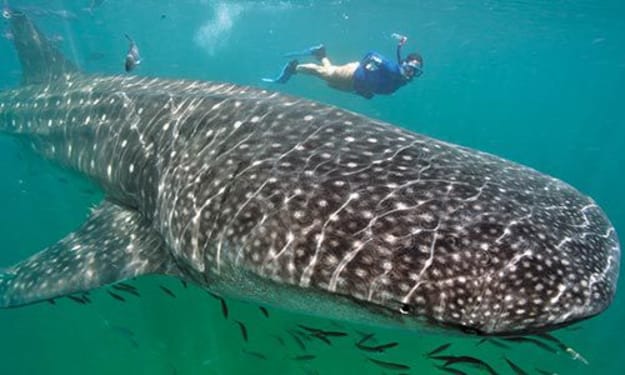The Southern Resident Orcas Need Our Help
In the light of a death of an orca calf who was born into a population that has been listed as "endangered" since 2005, the plight of the Southern Resident Orca Community has been placed on the international spotlight.

For 17 days, a 20-year-old adult female orca named Tahlequah, also known as J35, carried her dead newborn calf in a tragic effort to continue caring for the calf despite it having to have died just shortly after birth. Around the same time, her cousin, J50, also known as Scarlet, is grossly underweight as the result of possible malnutrition from the lack of the orca's primary food source, chinook salmon. Currently, as of now, there are ongoing efforts to rescue Scarlet from becoming another casualty by using boats to deliver her live salmon through a test feeder while collecting breath samples to monitor her health. Also, researchers also plan to use the live fish to provide medication to the sickly three-year-old orca even though there is no guarantee that she will eat live fish, but at the same time, the fact that scientists are making an effort to feed a wild orca is very unprecedented.
What Are Southern Resident Orcas?
Found exclusively in the Salish Sea off the coast of Washington State and the Canadian border, Southern Resident orcas, are organized into three distinct pods known as J, K, and L pods. Each of these pods has their very own matrilineal lines, as well as, their very own dialect that is unique to these pods. These pods will spend most of the year roaming the Salish Sea separately, only coming together on various occasions. It's believed that about 40% of the population had been collected from live capture fisheries for aquariums in the Northern Hemisphere until the mid-1970's. Around that time, the state of Washington banned the practice. In 2005, this population was declared "endangered" under the Endangered Species Act and are now regarded as one of the most endangered marine mammals in the United States. In 1995, there were about 98 Southern Resident orcas in the Salish Sea, but today, as of 2018, there are now about 75 orcas. Of the eleven calves born between 2014-2016, only five, including Scarlet, have survived. In 2017, a study had shown that nearly two-thirds of all Southern Resident orca pregnancies have failed over a seven-year period as the result of the lack of salmon that the orcas depend on for their survival.
Why are they "Endangered"?
• Studies that have been down the decline of the Southern Resident orca population has identified three threats to their survival-lack of food source, noise pollution, and chemical pollution. About 80 percent of the orcas' main diet consists of Chinook salmon, but this species of fish, which were once abundant in the Columbia Snake River watershed, is also facing extinction as a result of habitat destruction by the construction of dams that prevent them from returning to the Snake River to breed. In fact, in the last six decades, hundreds of wild salmon runs have become extinct as a result of habitat loss and overfishing, and many of them were the winter runs of both Chinook and Coho salmon. While surviving stocks may be able to sustain the resident orcas on a long-term, it may affect their nutrition during the winter months and may end up requiring the mammals to change their movement patterns when searching for food.
• Noise pollution is also a significant threat to the resident orca population in the Salish Sea as well. For example, the waters around the San Juan Islands and Vancouver, British Columbia are known to become busy as a result of commercial shipping, fishing, whale watching, kayaking, and pleasure boating. These vessels are said to have a powerful potential to affect the orcas' ability to find food, breed, raise their calves, socialize with other animals, and rest. In the wild, cetaceans rely on underwater sound for their behavioral lives and vessel activity can prevent the whales from such activities.
• Chemical pollutants PCBs have been known to bioaccumulate into orca tissue, which can cause orcas to suffer from endocrine and immune system problems when suffering from malnutrition. Besides, past studies done on stranded orcas all across the Pacific Northwest have shown that these marine mammals have incredibly high levels of lead, mercury, and PCBs, which makes them one of the most highly contaminated mammals in the Pacific Ocean.
What's being done about it?
• Currently, in Washington State, there are monumental efforts to bring down river damns that have been affecting declining salmon populations to ensure the survival of the Salish Sea's troubled marine ecosystem. Studies that have been conducted by the United States National Marine Fisheries Service nearly 20 years ago show that bringing down river damns would very much likely result in the recovery of wild salmon populations that rely on these river ways for breeding and migrations back and forth between sea and river. However, more surveys are needed to ensure that dam removal is an excellent alternative to declining salmon populations. Back in the San Juan Islands, Be Whale Wise campaigns are aimed at raising awareness about how noise pollution from boating activities are affecting the marine ecosystem by urging boaters to stay at least 100 yards from any wild orca while being giving a limited viewing time of around 30 minutes.
What Can You Do to Help Southern Resident Orcas?
• Clean garbage, including plastic-based products off a beach
• Buy organically grown food to reduce pesticide use.
• Use only biodegradable cleaning products
• Do not allow any chemical-based products like paint, or oil, to go down the drain and be sure you dispose of them properly.
• Support sustainable fisheries
• Adopt a Southern Resident Orca Through the Whale Museum's Orca Adoption Program
• Reduce, Reuse, and Recycle.
Anyway, I hope that you can help in making a difference for these endangered whales and ensuring their survival in their ever-shrinking habitats.
Like my work, feel free to give me tip or support my ongoing work on Patreon.
About the Creator
Jenna Deedy
Zoo and Aquarium Professional, Educator, Cosplayer, Writer and B.A. in Psychology whose got a lot to share when it comes to animals, zoos, aquariums, conservation, and more.
Instagram: @jennacostadeedy






Comments
There are no comments for this story
Be the first to respond and start the conversation.